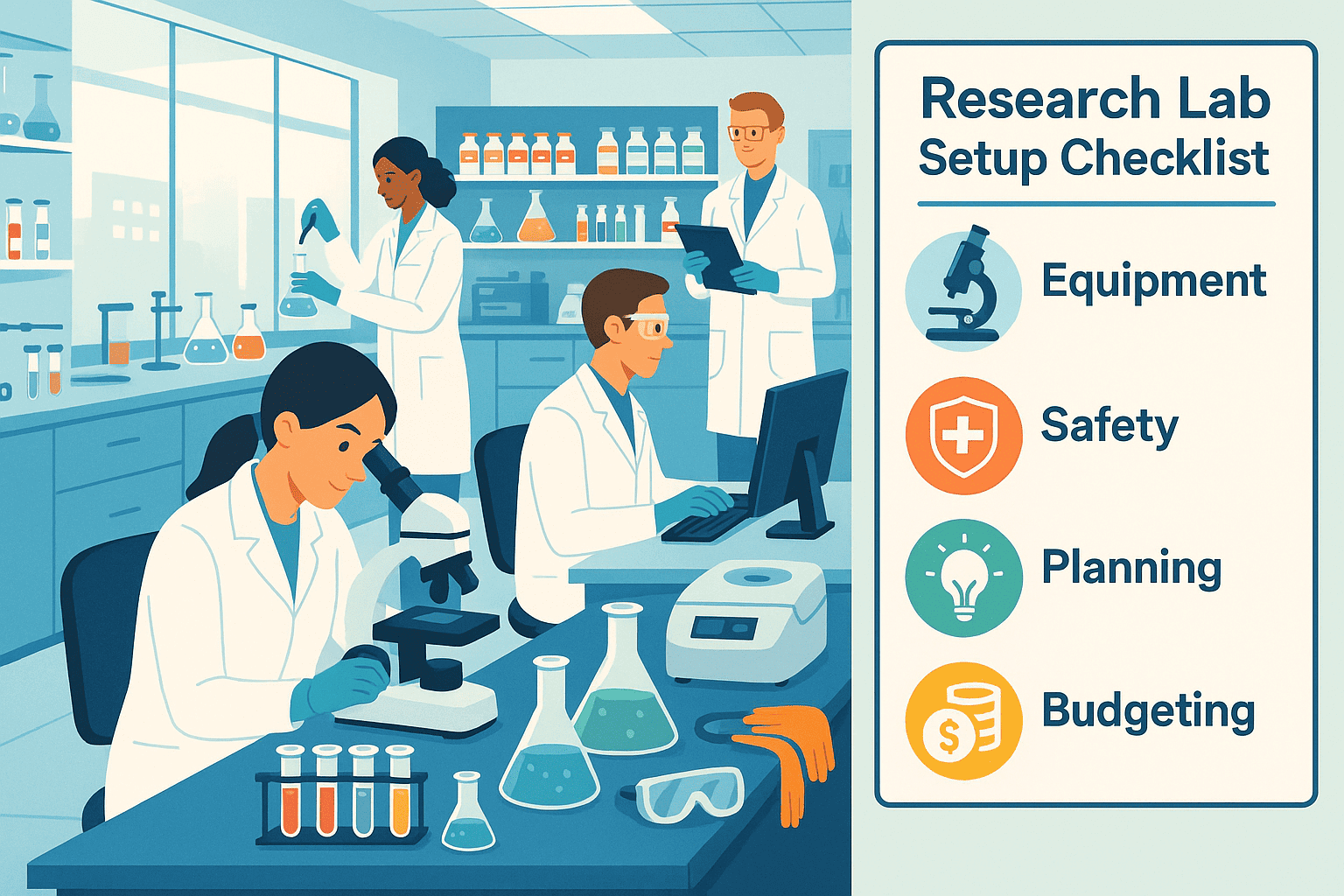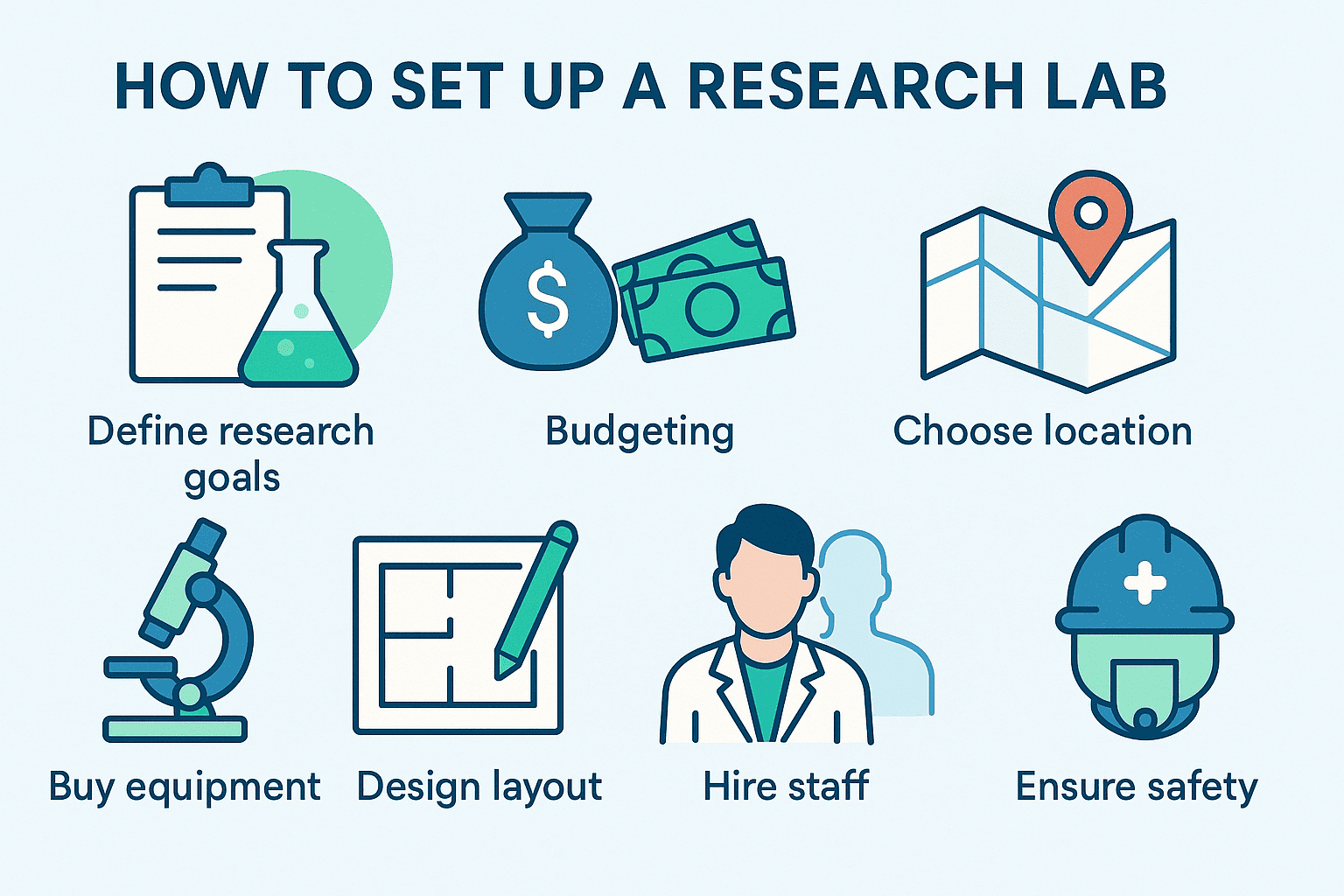How to Set Up a Research Lab Successfully: Step-by-Step Guide
Setting up a research laboratory is exciting, but it’s not something you can rush. A well-planned lab boosts efficiency, ensures safety, and makes day-to-day operations run smoothly. Whether you’re a scientist, student, or entrepreneur, this guide and research lab setup checklist will help you turn your vision into a fully functional workspace.
1. Start with Clear Planning
Before buying equipment or hiring staff, you need a solid plan.
Define Your Research Goals
-
Decide what type of research you’ll conduct—medical, engineering, chemistry, or another field.
-
Your focus will guide your space requirements, equipment needs, and safety protocols.
Set a Realistic Budget
-
List must-have equipment such as microscopes, centrifuges, and safety gear.
-
Prioritize quality tools that fit your financial plan.
2. Choose the Right Location
When setting up a research laboratory, location matters just as much as the equipment.
Look for a space that meets these criteria:
-
Safety: Proper ventilation, emergency exits, and secure storage for hazardous materials.
-
Space: Enough room for equipment, workstations, and storage, with potential for future expansion.
3. Research Lab Setup Checklist: Essential Equipment

Basic Equipment
-
Microscopes, centrifuges, Bunsen burners.
-
Test tubes, beakers, pipettes.
-
Safety gear—lab coats, gloves, goggles.
Advanced Tools (depending on your field)
-
Spectrometers, DNA sequencers, or 3D printers.
-
High-performance computers for data analysis.
4. Design Your Lab for Efficiency
An effective layout improves workflow and reduces errors.
Workstation Layout
-
Separate clean zones from chemical work areas.
-
Use ergonomic furniture for long hours of research.
Storage and Organization
-
Label all chemicals and samples.
-
Keep frequently used tools within easy reach.
Digital Management Systems
-
Use inventory tracking software and cloud-based experiment logs.
5. Build the Right Team
Key Roles
-
Scientists & Researchers – Lead experiments.
-
Lab Technicians – Manage equipment and daily operations.
-
Students/Interns – Assist while gaining experience.
Training
-
Safety protocols for handling hazardous materials.
-
Emergency procedures for fire, chemical spills, and injuries.
6. Secure Funding
-
Grants & Scholarships – Apply through universities or research councils.
-
Corporate Sponsorships – Partner with industry leaders.
-
Crowdfunding – Engage the public in supporting innovative projects.
7. Maintain and Upgrade
-
Calibrate and clean equipment regularly.
-
Restock supplies before they run out.
-
Update technology to stay competitive.

FAQs
Q1: What’s the first step in setting up a research laboratory?
Define your research goals and budget, then choose a location that meets safety and space needs.
Q2: What’s included in a research lab setup checklist?
Safety measures, essential equipment, skilled staff, and efficient workflow design.
Q3: How do I design my lab for maximum efficiency?
Divide it into functional zones, ensure organized storage, and use digital tools.
Conclusion
Knowing how to set up a research lab is about more than buying equipment—it’s about creating a safe, efficient, and future-ready workspace. By following this research lab setup checklist, you’ll have the right foundation to produce groundbreaking results while keeping safety and organization at the core of your operations.



